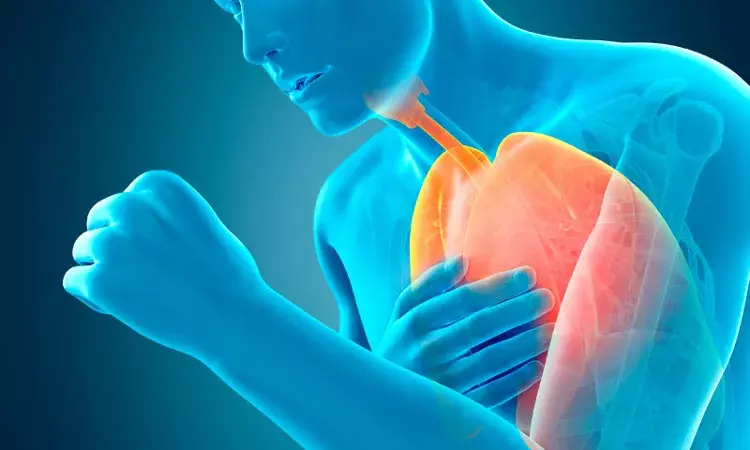- Home
- Medical news & Guidelines
- Anesthesiology
- Cardiology and CTVS
- Critical Care
- Dentistry
- Dermatology
- Diabetes and Endocrinology
- ENT
- Gastroenterology
- Medicine
- Nephrology
- Neurology
- Obstretics-Gynaecology
- Oncology
- Ophthalmology
- Orthopaedics
- Pediatrics-Neonatology
- Psychiatry
- Pulmonology
- Radiology
- Surgery
- Urology
- Laboratory Medicine
- Diet
- Nursing
- Paramedical
- Physiotherapy
- Health news
- Fact Check
- Bone Health Fact Check
- Brain Health Fact Check
- Cancer Related Fact Check
- Child Care Fact Check
- Dental and oral health fact check
- Diabetes and metabolic health fact check
- Diet and Nutrition Fact Check
- Eye and ENT Care Fact Check
- Fitness fact check
- Gut health fact check
- Heart health fact check
- Kidney health fact check
- Medical education fact check
- Men's health fact check
- Respiratory fact check
- Skin and hair care fact check
- Vaccine and Immunization fact check
- Women's health fact check
- AYUSH
- State News
- Andaman and Nicobar Islands
- Andhra Pradesh
- Arunachal Pradesh
- Assam
- Bihar
- Chandigarh
- Chattisgarh
- Dadra and Nagar Haveli
- Daman and Diu
- Delhi
- Goa
- Gujarat
- Haryana
- Himachal Pradesh
- Jammu & Kashmir
- Jharkhand
- Karnataka
- Kerala
- Ladakh
- Lakshadweep
- Madhya Pradesh
- Maharashtra
- Manipur
- Meghalaya
- Mizoram
- Nagaland
- Odisha
- Puducherry
- Punjab
- Rajasthan
- Sikkim
- Tamil Nadu
- Telangana
- Tripura
- Uttar Pradesh
- Uttrakhand
- West Bengal
- Medical Education
- Industry
Tissue Doppler may detect LV Dysfunction in COPD patients without pulmonary hypertension

Subclinical LV systolic dysfunction was a frequent finding in a cohort of COPD patients, even in those with normal pulmonary artery pressure, finds a study recently published in the PLOS One Journal.
Janne M. Hilde and colleagues from the Department of Cardiology, Oslo University Hospital-Aker, Oslo, Norway, Faculty of Medicine, University of Oslo, Oslo, Norway aimed to assess prevalence of left ventricular (LV) systolic and diastolic function in stable cohort of COPD patients, where LV disease had been thoroughly excluded in advance.
The study included a total of 100 COPD outpatients in GOLD II-IV, out of which 34 were categorised as controls. Patients were divided by invasive mean pulmonary artery pressure (mPAP) in COPD-PH (≥25 mmHg) and COPD-non-PH (<25 mmHg), which was subdivided in mPAP ≤20 mmHg and 21–24 mmHg.
LV myocardial performance index (LV MPI) and strain by tissue Doppler imaging (TDI) were used for evaluation of LV global and systolic function, respectively. LV MPI ≥0.51 and strain ≤-15.8% were considered abnormal. LV diastolic function was assessed by the ratio between peak early (E) and late (A) velocity, early TDI E´, E/E´, isovolumic relaxation time, and left atrium volume.
The authors observed that LV MPI ≥0.51 was found in 64.9% and 88.5% and LV strain ≤-15.8% in 62.2.% and 76.9% in the COPD-non-PH and COPD-PH patients, respectively.
Similarly, LV MPI and LV strain were impaired even in patients with mPAP <20 mmHg. Furhtermore, in multiple regression analyses, residual volume and stroke volume were best associated to LV MPI and LV strain, respectively.
Except for isovolumic relaxation time, standard diastolic echo indices as E/A, E´, E/E´ and left atrium volume did not change from normal individuals to COPD-non-PH.
Hence, the authors concluded that subclinical LV systolic dysfunction was a frequent finding in this cohort of COPD patients, even in those with normal pulmonary artery pressure.
However, evidence of LV diastolic dysfunction was hardly present as measured by conventional echo indices.
Dr. Nandita Mohan is a practicing pediatric dentist with more than 5 years of clinical work experience. Along with this, she is equally interested in keeping herself up to date about the latest developments in the field of medicine and dentistry which is the driving force for her to be in association with Medical Dialogues. She also has her name attached with many publications; both national and international. She has pursued her BDS from Rajiv Gandhi University of Health Sciences, Bangalore and later went to enter her dream specialty (MDS) in the Department of Pedodontics and Preventive Dentistry from Pt. B.D. Sharma University of Health Sciences. Through all the years of experience, her core interest in learning something new has never stopped. She can be contacted at editorial@medicaldialogues.in. Contact no. 011-43720751
Dr Kamal Kant Kohli-MBBS, DTCD- a chest specialist with more than 30 years of practice and a flair for writing clinical articles, Dr Kamal Kant Kohli joined Medical Dialogues as a Chief Editor of Medical News. Besides writing articles, as an editor, he proofreads and verifies all the medical content published on Medical Dialogues including those coming from journals, studies,medical conferences,guidelines etc. Email: drkohli@medicaldialogues.in. Contact no. 011-43720751


